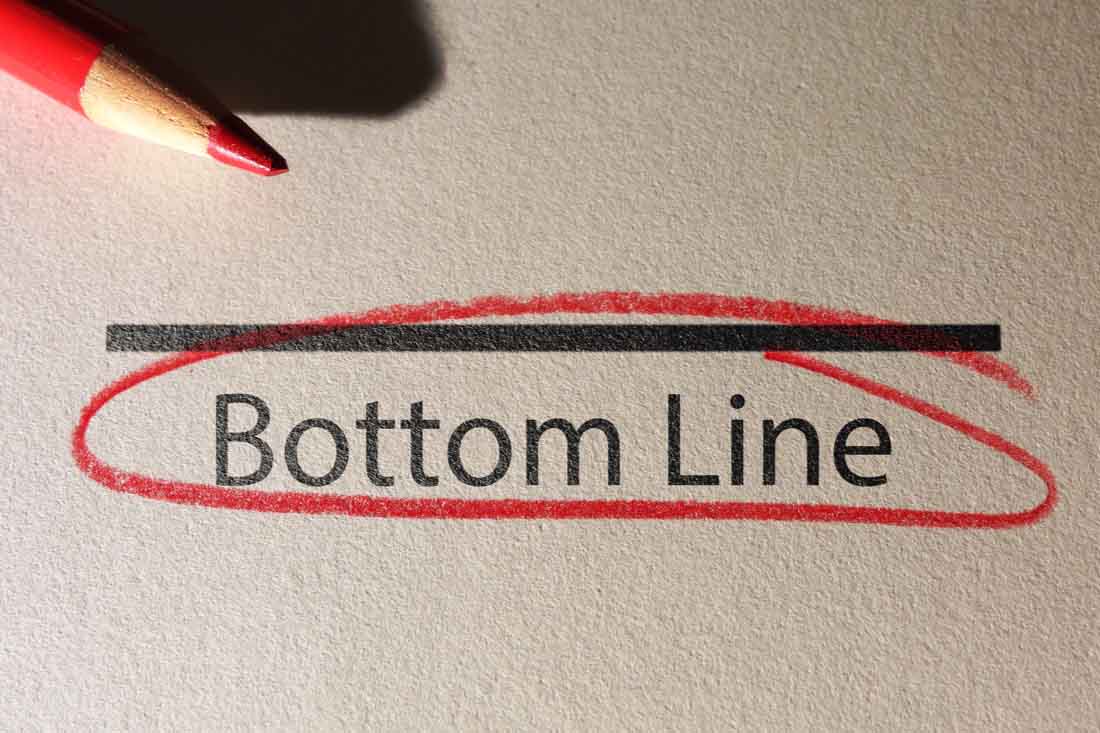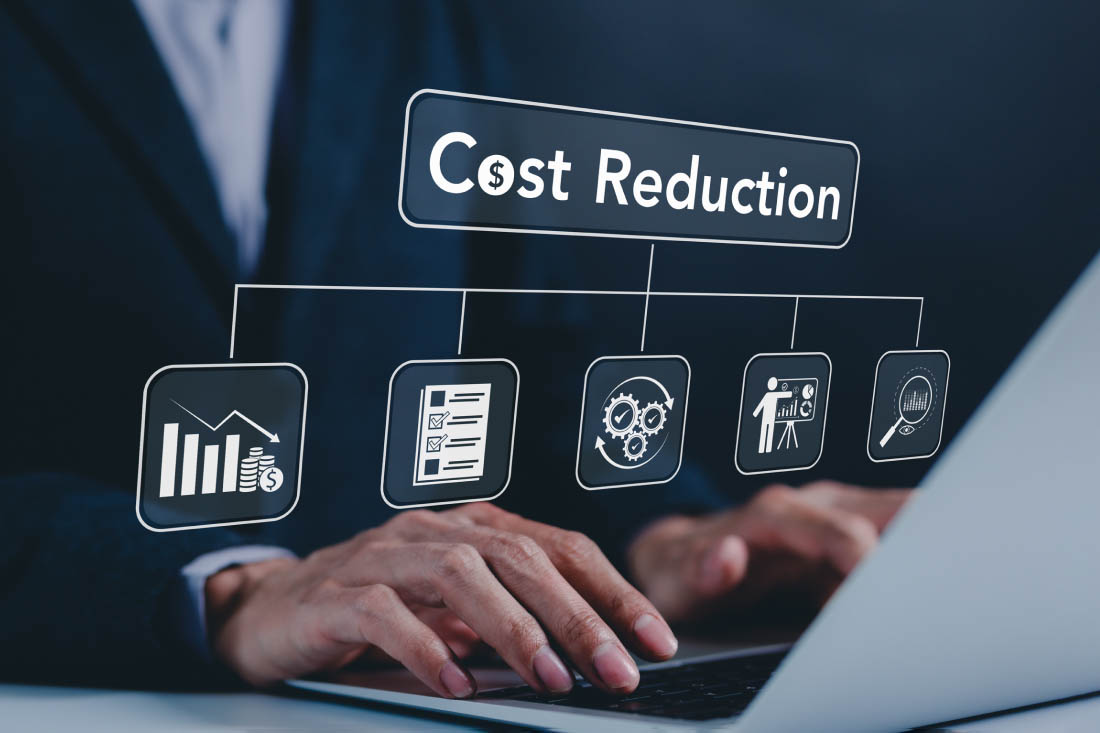As a business owner or leader, your organization’s bottom line is one of the most important aspects you have to think about. As an indicator of your company’s profitability, financial health and performance, it represents the sum of your team’s hard work as well as a predictor of what’s to come. To stay competitive, you have to ask yourself: How can I maximize my organization’s bottom line?
While the term refers to the net profit your company has made over a year, the bottom line on your income statement also indicates what investments you’ve made in terms of headcount, tools, technology and other operating costs. Over time, it will tell you what’s working in your company and give you a strong sense of where the company is going.
Securing your organization’s future means figuring out how to maintain and increase revenue, which is a complicated task. So here are 10 strategies you can use to improve your bottom line.
1. Improve operational efficiency
Operational efficiency is the ratio of your organization’s input to your output and is a strong indicator of where you can cut expenses while increasing revenue. It’ll look different for every organization, even within the same industry. While it’s often confused with productivity, efficiency is different — it focuses on doing the same work (in terms of quality, raw output and other markers) while using fewer resources.
To improve operational efficiency, first define your measures of efficiency as well as what processes contribute to inefficiency. Specifically, you should measure performance, compare against industry and internal benchmarks, identify goals, determine responsibilities, track time needed to complete tasks and then compare these metrics over time. Tracking your operational efficiency lays a baseline path for all the other strategies that will improve your bottom line.
2. Remove barriers to productivity
Inefficient processes, unnecessary meetings, distractions and underwhelming tools all impede your employees’ ability to work properly. The first step is identifying how and when your employees do their best work and using this data to set benchmarks for performance improvement.
Employee monitoring and productivity management software like ActivTrak gives you insight into patterns across your organization, allowing you to streamline processes and remove barriers to productivity. It provides management and employees with data to improve their performance and thus, the company’s bottom line.
3. Implement strategic alignment
Based on a survey of 500 senior executives from companies with annual revenues of $1 billion or more, only 10% of them have their strategies aligned with their processes to ensure daily work matches organizational goals. By strategically aligning your organization’s direction and purpose, your teams can collaborate more effectively and work more efficiently. Better prioritization, organization and decision-making are all part of functional strategic alignment.
Once your organization has aligned its goals with its activities and made it clear to employees where their work fits in the overall planning, you’ll have an easier time identifying and removing processes that waste resources or time and negatively affect the company’s bottom line.
4. Eliminate unnecessary software costs
Utilizing SaaS management software should be part of your strategic alignment and operational efficiency programs. According to research from BetterCloud, most organizations pay for more than 130 apps on average, and enterprise organizations nearly triple that amount. While cloud-based software has made our modern era the most productive yet, unused apps and reiterative software-as-a-service (SaaS) technology mean unnecessary costs and inefficiency.
When it comes to SaaS subscriptions, implementing a strong SaaS spend management program lets you see which programs teams actually use, how team members use them and whether or not the cost is justified in your organization. This in turn informs how you procure SaaS programs and gives you ways to reduce SaaS costs now and in the future. Additionally, strong SaaS management programs reduce security risks and issues, which add to operational spending and affect your bottom line.
5. Right-size office space
With more and more employers trying to decide which return-to-office or work-from-home policies are best for organization, office real estate has come into the spotlight. Depending on what part of the country your office is in, you can pay tens of thousands of dollars per employee every year for office space. If no one is in your office, that’s a big, wasted operational expense.
The best way to cut this cost is to calculate how much office space you need and determine how to best use the space. Understanding where and how your employees work allows you to adapt to best support productivity – whether it’s removing unused space or adding more. If you’ve recently implemented a hybrid or work-from-home policy, it’s time to analyze how well you’re using your office space and make changes if you’re spending too much on unused space.
6. Identify underutilized employees
Your employees are your biggest resource, and underutilized employees are an untapped benefit to your bottom line. While overwhelming employees with work is never a good idea, finding employees who can be used in more effective ways is one way to improve productivity and your bottom line.
At the same time, reassigning work from overworked employees to underutilized employees fixes unbalanced workloads, cutting down on overtime expenses, turnover and missed work. Prioritize workload management to determine which employees are over- or underworked, where work can be reassigned, defining healthy hourly ranges and spotting burnout before it affects team members and overall productivity.
7. Invest in the employee experience
Engaged employees are productive employees. Turnover, quiet quitting, sick time and burnout impact your bottom line by forcing you to spend more resources on reassigning work and training new employees. Investing in the employee experience will improve your overall productivity, increase customer satisfaction and lead to higher revenue.
The first step in improving the employee experience is understanding it. Productivity management software allows you to spot issues holding employees back, such as distractions or unused technology. Investing in employee training and skills development programs enhances team members’ skills, knowledge and productivity. It also boosts employee satisfaction and motivation.
8. Improve the customer experience
The customer experience includes any way a customer interacts with your brand. This spans customer service and sales, support lines or chat, support forums and self-help groups, social media presence, advertising and your website. By improving the customer experience, your business can eliminate pain points that cause existing customers to leave while also making your business more enticing to new customers who otherwise may drop off during the consideration phase of the buyer’s journey. The result is fewer customers leaving and more customers signing up, which improves your bottom line.
Improving the customer experience is easier said than done, especially because you’ll need to understand the experience across all channels your organization utilizes. However, a good place to start is by using workforce analytics to better understand your team’s workflows and see if there are any internal processes contributing to a poor customer experience. By starting with your own processes, you may be able to improve the customer experience on several channels at once for a larger impact on your bottom line.
Improve your bottom line with ActivTrak Workforce Analytics
Get the insights and analytics you need to improve your bottom line with ActivTrak. Enhance employee productivity, streamline processes and make data-informed decisions to drive profitability. With our award-winning workforce analytics platform, trusted by over 9,500 customers, you can unlock the full potential of your team and optimize your organizational outcomes.
Schedule a free demo today to see how ActivTrak can help improve your bottom line!





